The Cultural Significance of Flowers in Iran
Flowers have held a special place in Iranian culture for centuries. They symbolize beauty, love, and renewal and are celebrated in poetry, art, and daily life. Persian literature, especially the works of poets like Hafez and Saadi, often uses floral imagery to convey deep emotions. Flowers are also a key feature in Iranian celebrations, particularly Nowruz, the Persian New Year, where arrangements of hyacinths and tulips adorn homes as a symbol of new beginnings.
Famous Iranian Flowers and Their Unique Characteristics
Iran’s diverse climate and rich soil create the perfect environment for a variety of exquisite flowers. These blooms are not only aesthetically pleasing but also carry cultural, medicinal, and symbolic significance. Below are some of the most famous flowers native to Iran, along with their unique characteristics:
1. Lilium Ledebourii (Sousan)
Lilium ledebourii, commonly known as Sousan-e-Chelcheragh, is one of the rarest and most beautiful flowers native to Iran. Found only in the Damash region of Gilan province, this flower is a protected species due to its endangered status. Its large, white blossoms with purple spots bloom in early summer and emit a pleasant fragrance. The flower holds cultural significance and is often associated with purity and beauty in Iranian tradition.

2. Persian Rose (Rosa damascena)
Known for its intoxicating fragrance, the Persian rose is famous worldwide for producing high-quality rosewater. These roses thrive in the city of Kashan, where an annual rosewater festival celebrates their harvest. The delicate pink petals are also used in traditional Iranian desserts and perfumes.
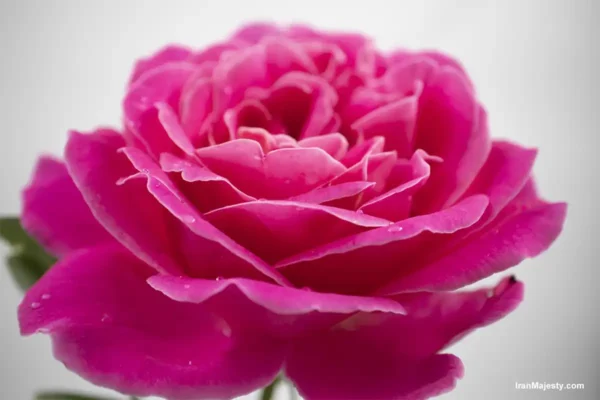
3. Tulip (Laleh)
The tulip holds a special place in Iranian culture, symbolizing martyrdom and love. Native tulip species flourish in the Alborz and Zagros mountain ranges. Their vibrant colors, ranging from red to yellow, make them a favorite sight during spring.
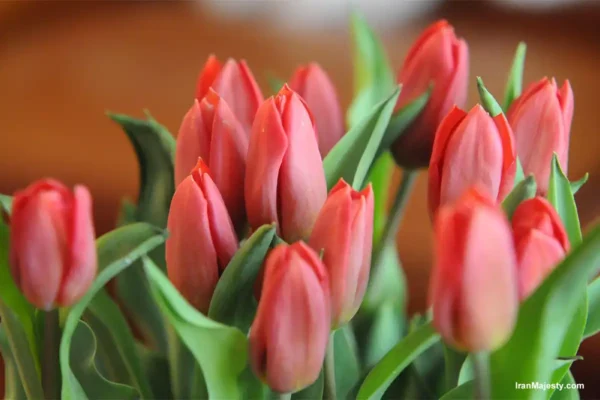
4. Crocus sativus (Saffron Crocus)
Iran is the largest producer of saffron in the world, and the saffron crocus is its source. These flowers have delicate purple petals and bright red stigmas, which are carefully harvested to produce saffron—a valuable spice used in Iranian cuisine.
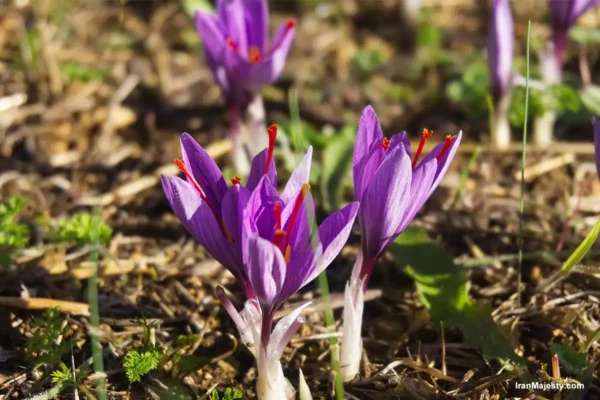
5. Iris (Zanbagh)
Irises grow abundantly in Iran, particularly in Fars province. Known for their striking beauty, they come in a variety of colors, including deep purple, yellow, and white. The flower symbolizes wisdom and valor in Persian literature.
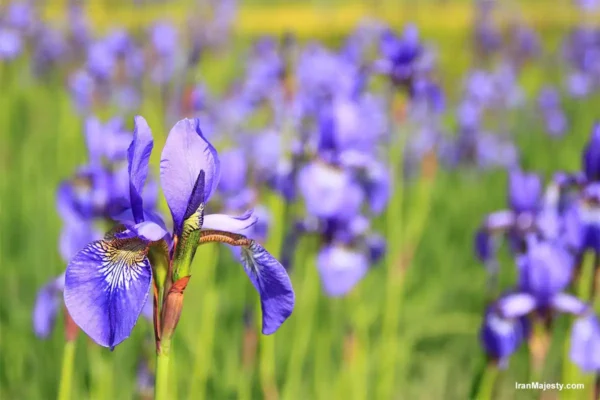
6. Hyacinth (Sonbol)
Hyacinths are a staple of Nowruz, the Persian New Year. These fragrant, colorful blooms are used to decorate Haft-Seen tables, symbolizing rebirth and the arrival of spring. Their hues range from purple and blue to pink and white.
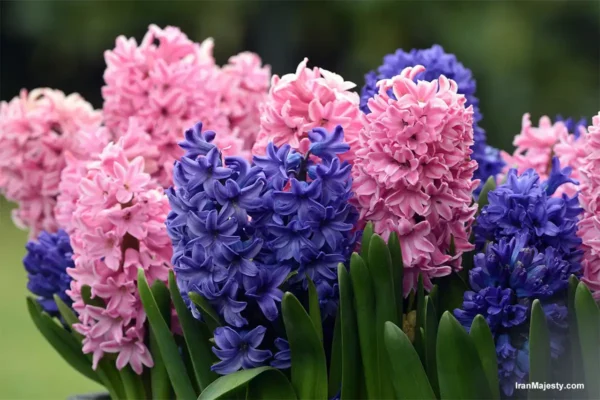
7. Poppy (Shaghayegh)
The wild red poppy, with its delicate petals and vibrant color, grows in Iran’s plains and hillsides. It is often associated with resilience and beauty in Iranian poetry and art.
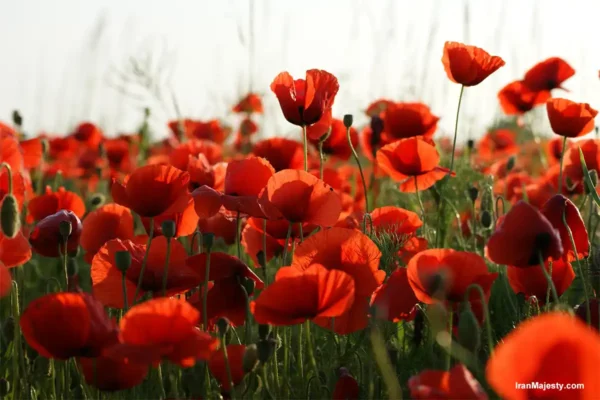
8. Lotus (Niloufar)
The lotus flower thrives in Iran’s wetlands and is revered for its spiritual symbolism. It represents purity and enlightenment in Persian culture and is often depicted in traditional art.
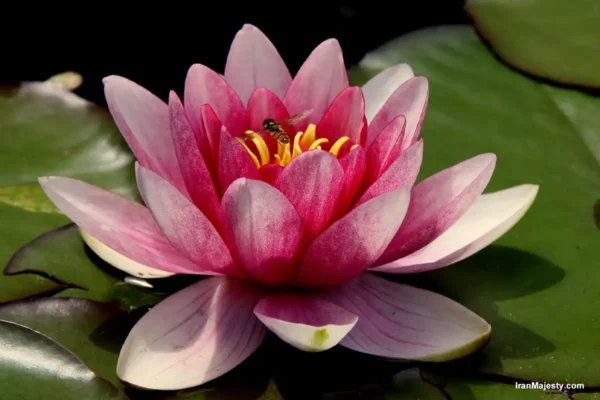
9. Jasmine (Yas)
Jasmine flowers, known for their enchanting fragrance, are popular in Iranian gardens. They bloom in clusters of small, white flowers and are often used in making perfumes and essential oils.
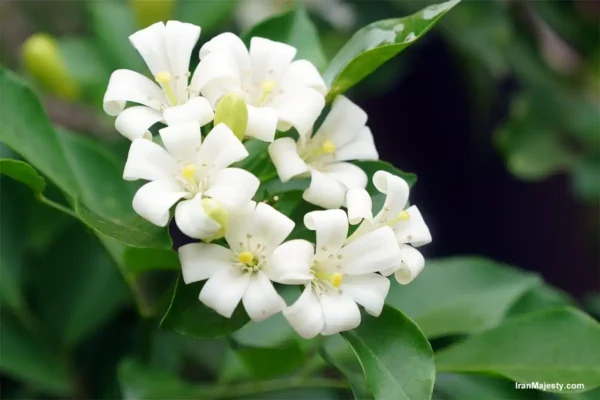
10. Bitter Orange Blossom (Azahar)
The blossoms of the bitter orange tree are cherished for their delightful aroma. Found mainly in Shiraz, these flowers are used to produce fragrant essential oils and traditional herbal remedies.
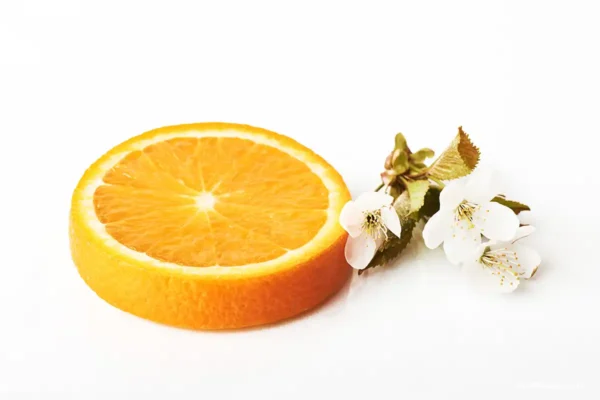
11. Cyclamen (Baneh)
Cyclamen grows in the mountainous regions of northern Iran. Its pink and white flowers bloom in winter, making it a unique sight during colder months. The plant is also valued for its medicinal properties.
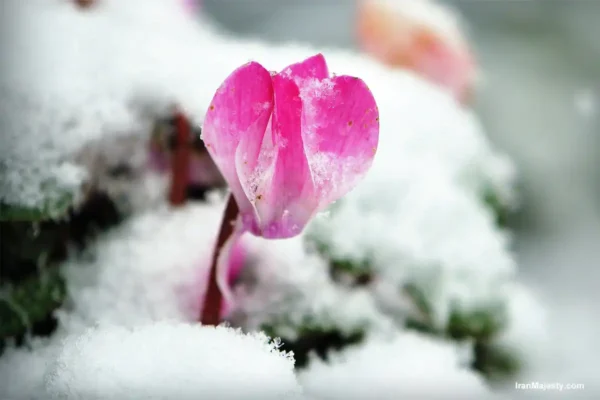
12. Chrysanthemum (Gol-e-Raz)
Chrysanthemums are widely grown in Iran, admired for their vibrant colors and long-lasting blooms. They are commonly used in floral arrangements and traditional ceremonies.
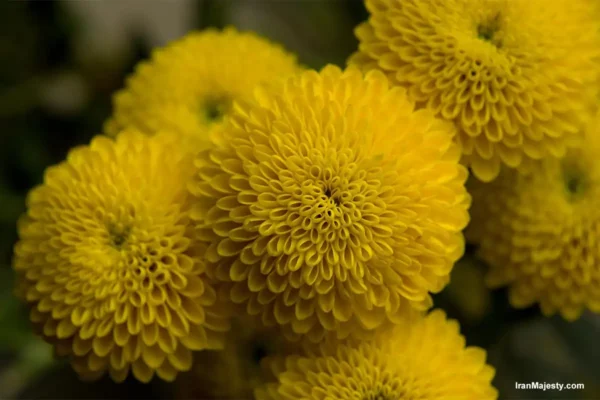
13. Snowdrop (Gol-e-Barfi)
Snowdrops are small, bell-shaped flowers that bloom in the early spring in Iran’s colder regions. They symbolize hope and renewal and are a harbinger of warmer days ahead.

14. Evening Primrose (Shab-boo)
Known for its yellow blooms that open at night, the evening primrose grows in various parts of Iran. It is valued for its beauty and medicinal uses, particularly its oil.
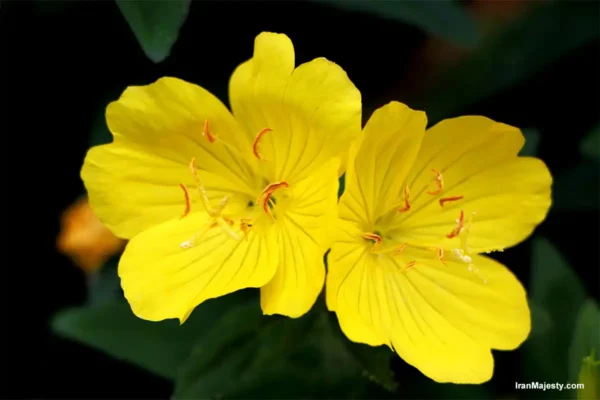
15. Wild Tulip (Laleh-ye-Vahshi)
Wild tulips are a breathtaking sight in the meadows of western Iran. These flowers are smaller and more delicate than cultivated tulips but are equally stunning with their vibrant red hues.
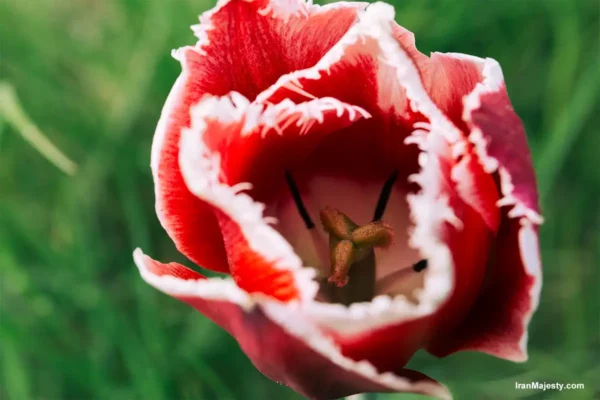
16. Marigold (Zardak)
Marigolds thrive in Iranian gardens, offering bright orange and yellow blooms. They are often used for ornamental purposes and in traditional medicine.
Iran’s native flowers are a testament to the country’s natural beauty and cultural richness. Each flower holds a unique place in Persian tradition, from the rare Lilium ledebourii to the iconic Persian rose. Exploring these blooms offers a deeper understanding of Iran’s biodiversity and the symbolic meanings woven into its heritage.
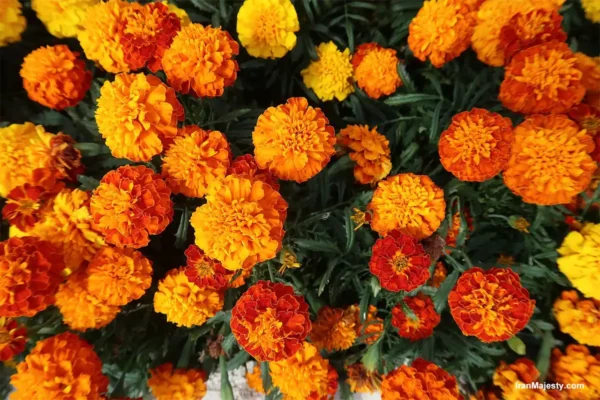
in Iran: A Blend of Tradition and Innovation
Iran has a long history of flower cultivation, with certain regions specializing in specific varieties. For example, Kashan is famous for its rosewater production, where the roses are handpicked and distilled using traditional methods. Modern agricultural techniques have also been adopted, making Iran a leading exporter of flowers to neighboring countries.
Flowers in Iranian Daily Life and Celebrations
Flowers are an integral part of Iranian customs and traditions. From weddings to funerals, floral arrangements carry symbolic meanings. During Nowruz, flower markets bustle with activity as families purchase hyacinths and tulips to decorate their Haft-Seen tables. Additionally, flowers are commonly given as gifts to express love, gratitude, and respect.
Conclusion: A Blooming Legacy
Iranian flowers are more than just a natural beauty; they are a testament to the country’s rich cultural heritage and deep connection to nature. Whether adorning gardens, inspiring poets, or playing a role in traditional ceremonies, flowers are an essential part of Iranian life. Exploring Iran’s floral diversity offers not only a visual feast but also an insight into the country’s traditions and values. For anyone visiting Iran, immersing yourself in its gardens and floral markets is an experience not to be missed—it’s a journey into the heart of Persian culture.

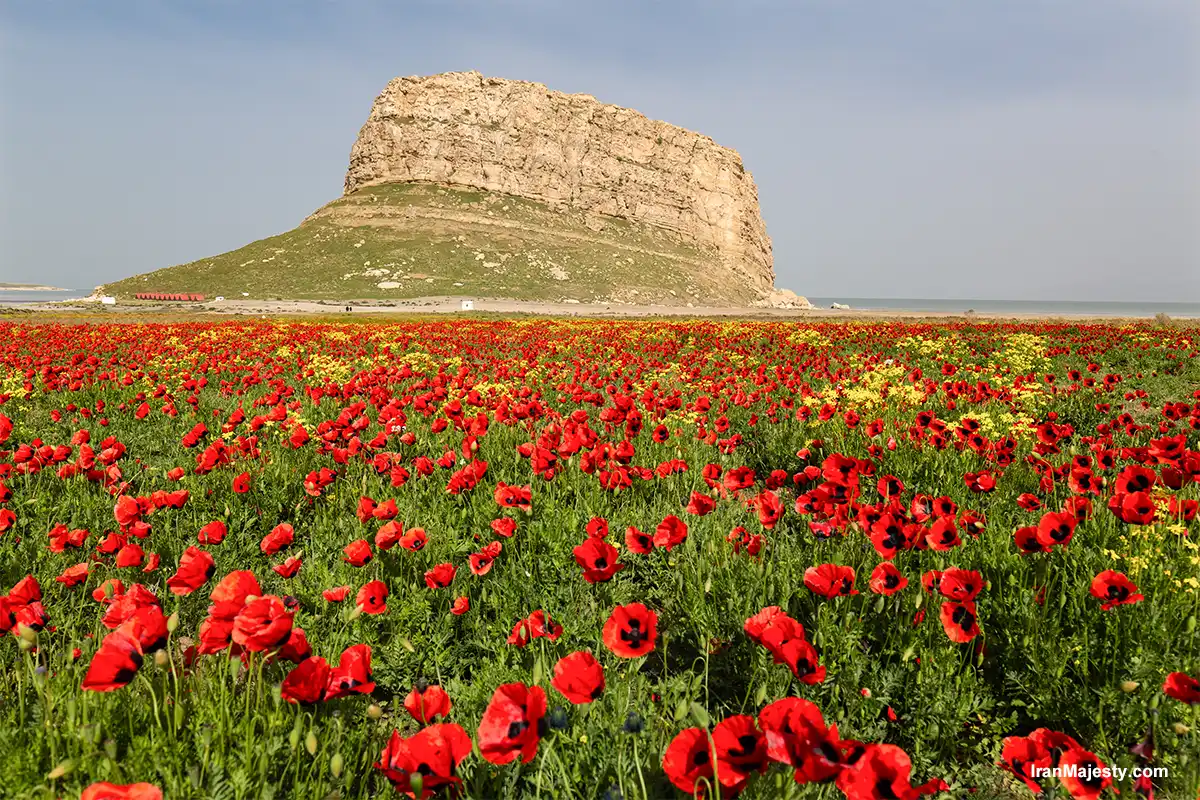
0 Comments